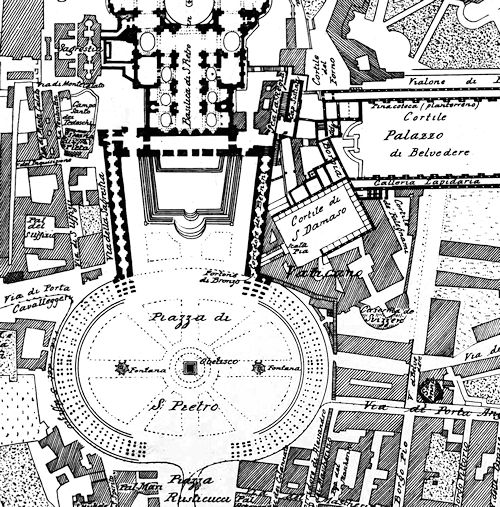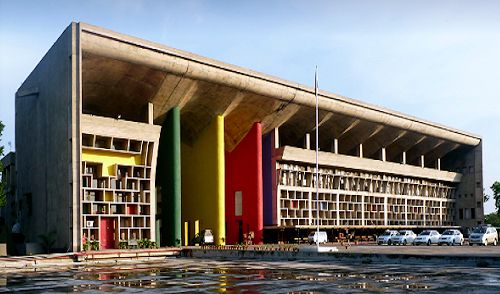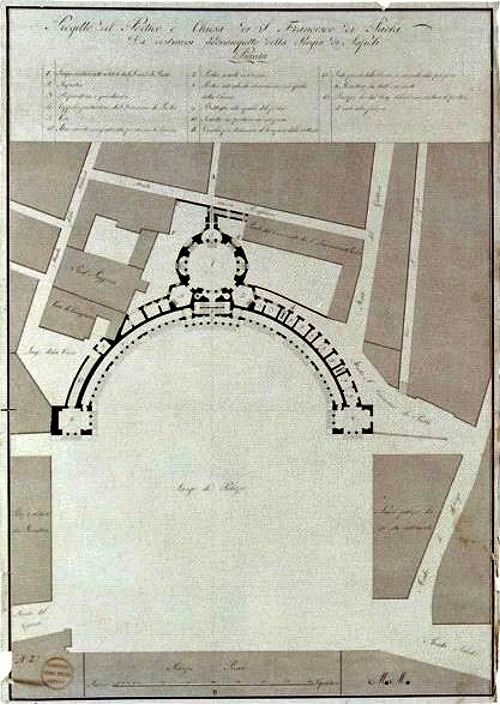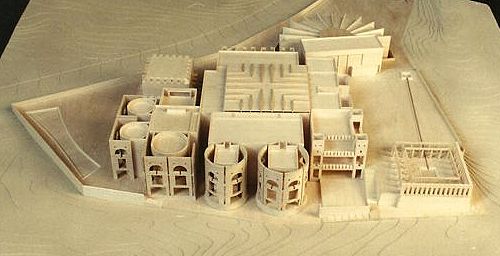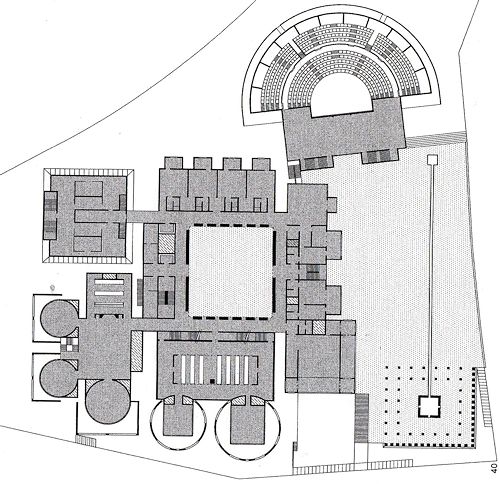the philadelphia school, deterritorialized | junkyard plus ultra |
|
|
|
Crowded intricacies can be excluded as well as contained. The colonnades at St. Peter's and at the Piazza del Plebiscito in Naples, respectively exclude the intricacies of the Vatican Palace complex and the city complex, in order to achieve unity for their piazzas.
|
Containment and intricacy have been characteristic of the city as well. Fortified walls for military protection and the greenbelt for civic protection are examples of this phenomenon. Contained intricacy might be one of the viable methods for dealing with urban chaos and the endlessness of roadtown; through the creative use of zoning and positive architectural features it is possible to concentrate the intricacies of road towns and junkyards, actual and figurative. And like the sculpture which consists of compressed automobiles by John Chamberlain and the photographs through telescopic lens in Blake's God's Own Junkyard, they achieve an ironically compelling kind of unity.
|
Redundant enclosure, like crowded intricacies, is rare in our architecture. With some significant exceptions in the work of Le Corbusier and Kahn, Modern architecture has tended to ignore such complex spatial ideas. The "utility core" of Mies or early Johnson is not relevant because it becomes a passive accent in a dominant open space, rather than an active parallel to another perimeter. Contradictory interior space does not admit Modern architecture's requirement of a unity and continuity of all spaces. Nor do layers in depth, especially with contrapuntal juxtapositions, satisfy its requirements of economic and unequivocal relationships of forms and materials. And crowded intricacy within a rigid boundary (which is not a transparent framework) contradicts the modern tenet which says that a building grows from the inside out.
|
www.quondam.com/40/4041g.htm | Quondam © 2020.04.10 |
